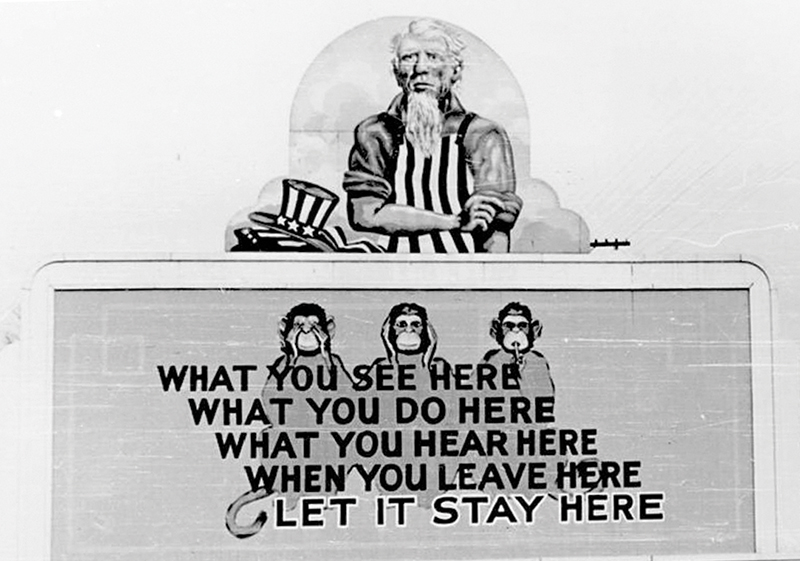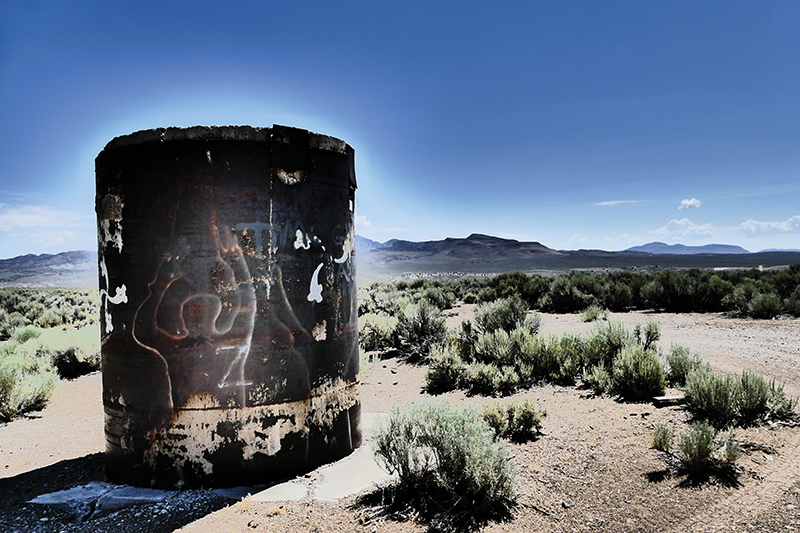Take a Tour Through the Atomic Age
Spring
2018
Feature
Take a Tour Through the Atomic Age
Rachel Kaufman, Editor

On January 27, 1951, the U.S. Department of Energy conducted the first above-ground test of an atomic device at the Nevada Test Site, 65 miles northwest of Las Vegas. The explosion could be seen as far away as San Francisco.
So naturally, as the Cold War—and atomic research—continued, the good people of Las Vegas did what made sense for Sin City: They turned the detonations into tourist attractions.
History books record that casinos offered “atomic cocktails” and “bomb parties” and that tourists flocked to watch detonations.
Nearly 70 years later, the thrills and horrors of the atomic age still attract tourists.
“If you’re interested in history, looking at the history of nuclear weaponry is a great way to [organize a vacation],” says Nathan Hodge, a national security reporter and the coauthor of Nuclear Family Vacation, “because it was something that shaped the entire Cold War, and the era that we live in today as well.” The book, despite the humorous title, isn’t really about a “vacation,” but does explore some of the more famous nuclear-related sites around the world.
Today, the lessons of the atomic age seem more relevant than ever. There are far fewer nuclear weapons in the world today than during the peak of the Cold War, but many more countries now possess them, according to the Bulletin of the Atomic Scientists. Just this year, the group announced that its “Doomsday Clock” had been moved 30 seconds closer — the “time” is now two minutes to midnight.
Timothy Karpin and Jim Maroncelli combed the United States for traces of the Cold War nuclear complex. They wrote about what they discovered in The Traveler’s Guide to Nuclear Weapons. And what they found is that—almost no matter where you live—you are not far from a place that was important to the history of nuclear weapons. “Most citizens probably think that nuclear weapons were created in a very small number of hidden facilities, buried in a cave inside a mountain,” says Karpin, whose background is in geophysics. “Few understand that they’re literally down the street—or at least used to be.”
The guidebook describes test sites and national labs, but also, for example, the Harshaw Chemical Company in downtown Cleveland, which produced uranium compounds and is still under remediation. The list of sites runs the gamut “from residential to the industrial to natural,” says Karpin.
Should you be interested in exploring the history of the atomic age, take heart: Many facilities want you to visit. “People want to tell the story,” says Maroncelli, who has a biology background but has consulted at Oak Ridge National Laboratory. “I’ve gone on several tours where I was the entire audience.” You don’t need a top-secret connection to visit most national labs. Lawrence Berkeley National Lab offers tours monthly. The Nevada Test Site (now known as the Nevada National Security Site), where the US conducted nearly a thousand nuclear tests (and to this day conducts “subcritical” tests of parts of nuclear weapons), holds twice-monthly tours. It’s even possible to tour the Hanford Site, where plutonium was made for use in the first nuclear bomb, even though it is the most contaminated nuclear site in the United States.
Given the time and, frankly, trouble—many of these tours require serious advance planning—of visiting nuclear sites, why would a tourist bother?
“The topic is an extreme edge of the human experience,” says Maroncelli. “Now we have, for the first time, the ability to commit suicide as a species. We’d never had that before.”
Maroncelli adds that in the course of researching The Traveler’s Guide, he and Karpin met people who had worked in a number of the facilities that built the weapons. “It was interesting to encounter people who were proud of their work. You can’t criticize that... They had various opinions... about how they were saving the world by making these things.”
“It almost made me wish we had the opportunity to work in a situation like that,” he says.

If you go:
Nevada National Security Site
Free tours approximately twice-monthly. Check website for details and registration:
http://nnss.gov/pages/PublicAffairsOutreach/NNSStours.html
Lawrence Berkeley National Lab
Free tours the third Friday of every month, except for December. Check website for details and registration:
http://www.lbl.gov/community/tours-faq/berkeley-lab-tour-information/
Hanford Site
Tours offered regularly, but 2018 schedule not yet posted. Check website for details:
http://www.hanford.gov/c.cfm/publicTours
100+ more sites in The Traveler’s Guide to Nuclear Weapons, available from www.atomictraveler.com
